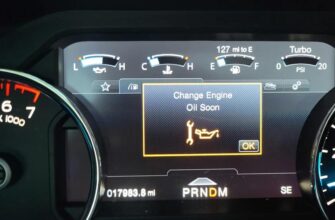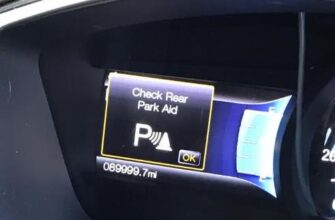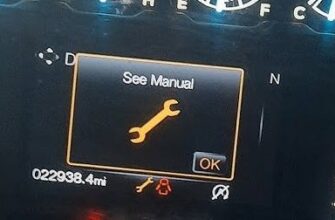There’s nothing quite like the feeling of pressing the accelerator in your Ford Focus, expecting a smooth surge of power, and instead getting a frustrating sputter, stutter, or jerk. It feels like your car is fighting against itself, hesitating when you need it to respond. If you’re thinking “Why is my car sputtering when I accelerate?” and you drive a Ford Focus, you’re not alone. This is a relatively common issue with several potential culprits.
Whether you’re driving a 2012 Ford Focus jerking when accelerating, a 2014 Ford Focus stuttering when accelerating, or experiencing a 2017 Ford Focus shuddering when accelerating, these symptoms all point to a problem where the engine isn’t getting, igniting, or transmitting power effectively to the wheels when you demand more speed. Let’s get to the bottom of this Ford Focus problem accelerating.
Understanding the Sputter: What’s Going Wrong Under Load?
When your Ford Focus sputters, stutters, jerks, or experiences reduced power specifically during acceleration, it means that one or more components are failing to deliver smooth, consistent power when the engine is under increased load. This is different from an idle issue; it happens when you press the gas pedal and the engine needs to work harder.
The problem could lie in:
- The Engine’s Air, Fuel, or Spark Delivery: The engine needs a precise mix of air and fuel, and a strong spark to ignite it, for smooth combustion. Issues here are common causes of sputtering and misfires.
- The Transmission: The transmission’s job is to transfer the engine’s power to the wheels. Problems within the transmission can cause hesitation, jerking, or shuddering, which can feel very similar to an engine sputter.
Common Causes for Ford Focus Acceleration Problems
Several things can cause your Ford Focus to sputter, stutter, jerk, or have acceleration reduced.
1. Ignition System Issues
Problems with getting a strong, timely spark are classic causes of sputtering and misfires, especially under load.
- Worn or Fouled Spark Plugs: Spark plugs wear out over time. If they’re old or covered in deposits, they can’t create a strong spark, leading to incomplete combustion and sputtering.
- Faulty Ignition Coils: Most modern cars have a coil pack for each spark plug. If a coil is failing, that cylinder won’t fire correctly, causing a misfire and noticeable sputter or jerk.
- Bad Spark Plug Wires (on older models): Damaged wires can prevent the spark from reaching the plug.
2. Fuel System Issues
The engine needs enough clean fuel delivered at the right pressure.
- Clogged Fuel Filter: A dirty fuel filter restricts fuel flow, meaning the engine might not get enough fuel under acceleration.
- Weak Fuel Pump: A failing fuel pump won’t supply fuel at the correct pressure, starving the engine when you press the gas.
- Dirty Fuel Injectors: Clogged injectors don’t spray fuel properly, leading to poor combustion.
- Fuel Pressure Regulator Issues: If the regulator isn’t maintaining correct fuel pressure.
3. Air Intake and Exhaust Issues
Proper airflow and exhaust flow are essential for engine performance.
- Clogged Air Filter: Restricts the amount of air entering the engine.
- Dirty Mass Air Flow (MAF) Sensor: The MAF sensor measures the amount of air entering the engine. If it’s dirty or faulty, it sends incorrect data to the computer, disrupting the air-fuel mix.
- Faulty Throttle Body: Problems with the electronic throttle body can cause incorrect airflow.
- Clogged Catalytic Converter or Exhaust Restriction: Restricts exhaust flow, preventing the engine from breathing properly.
- Vacuum Leaks: Leaks in the intake manifold or vacuum lines allow unmetered air in, leaning out the fuel mixture.
4. Sensor Malfunctions
Various sensors tell the engine computer what’s going on. If a sensor is faulty, the computer gets bad data and can’t optimize performance. MAF sensors, Oxygen (O2) sensors, and Crankshaft/Camshaft Position sensors are common culprits.
5. Transmission Problems (The Notorious PowerShift)
This is a very significant cause of symptoms like stuttering, jerking, and shuddering in many 2012 Ford Focus jerking when accelerating, 2014 Ford Focus stuttering when accelerating, 2016 Ford Focus stuttering when accelerating, 2017 Ford Focus shuddering when accelerating, and 2018 Ford Focus stuttering when accelerating models equipped with the DPS6 PowerShift automatic transmission.
This dual-clutch transmission is known for issues including:
- Clutch Wear/Shudder: The dry clutches in these transmissions can wear prematurely, leading to a noticeable shuddering when accelerating, especially at lower speeds or during shifts (which can feel like a Ford Focus problem accelerating).
- Transmission Control Module (TCM) Issues: Problems with the TCM can cause erratic shifting, jerking, or hesitation.
If your Ford Focus from these years is experiencing a noticeable vibration, juddering, or jerking feeling specifically during acceleration from a stop or at low speeds, the PowerShift transmission is a highly probable cause. Ford has acknowledged issues with these transmissions and offered extended warranties or repairs under certain conditions.
“My 2016 Ford Focus stuttering when accelerating from a stop was driving me nuts. It felt like the car was shaking. Robert, 52, I read online that it was a common problem with the PowerShift transmission in that year. The dealership ended up having to replace the clutch under an extended warranty.” – A Focus owner dealing with the PowerShift shudder
6. Other Less Common Issues
- Engine Mechanical Issues: Though less likely for just sputtering on acceleration, problems like low compression in a cylinder can cause misfires.
- Engine Computer (PCM) Problems: Rare, but the Powertrain Control Module could have a fault.
Troubleshooting Your Ford Focus Sputter
If your Ford Focus is sputtering when accelerating, here’s how to start investigating:
- Check for a Check Engine Light: Is the Check Engine light on? If yes, this is your best clue! The car’s computer has detected a problem and stored a diagnostic trouble code (DTC). You can get these codes read for free at many auto parts stores, or with a code reader. The code will point you towards a specific system (e.g., misfire in a specific cylinder, MAF sensor issue, fuel system lean/rich code). This is the most efficient way to start diagnosing. A related warning, like the Wrench Light on a Ford F-150, also indicates a powertrain/performance issue and requires code reading.
- Listen and Feel: Try to distinguish the feeling. Is it a distinct “miss” or stumble (more likely engine/ignition/fuel)? Or is it more of a vibration or judder during shifts (more likely transmission, especially PowerShift)?
- Basic Visual Checks: Check your air filter to see if it’s extremely dirty. Look for any obvious loose or disconnected hoses in the engine bay (potential vacuum leaks).
- Note When it Happens: Does it only happen when the engine is cold? When it’s hot? At a specific speed or RPM? This can provide clues.
When to Seek Professional Help
Diagnosing sputtering can be tricky because multiple systems are involved. While basic checks are helpful, you’ll likely need professional help if:
- The Check Engine light is on (to accurately read and interpret the codes).
- The sputtering is persistent or getting worse.
- You suspect a fuel system issue (requires pressure testing).
- You suspect a sensor issue (requires diagnostic tools to test sensor readings).
- You suspect a Ford Focus transmission shudder or jerking issue, particularly with a PowerShift transmission. These often require specialized diagnosis and repair procedures specific to that transmission. A mechanic familiar with Ford’s PowerShift issues will be essential. Symptoms like a Ford Focus acceleration reduced could also indicate the car’s computer is limiting power due to a detected fault (sometimes leading to limp mode).
A mechanic can perform tests like reading live sensor data, checking fuel pressure, performing a smoke test for vacuum leaks, or using specialized tools to diagnose transmission issues. Addressing an issue that causes sputtering promptly is important; delaying repairs could potentially lead to more serious problems or leave you with unreliable performance. Thinking about routine maintenance, like knowing How to Reset the Oil Change Light on a 2016 Ford Escape for preventative care, is crucial, but sputtering requires targeted diagnosis.
“I had a 2012 Ford Focus jerking when accelerating, and the Check Engine light came on. I got the code read, and it pointed to a misfire. It turned out to be a bad ignition coil on one of the cylinders. James, 49, replacing the coil fixed the sputtering instantly.” – A Focus owner fixing an ignition issue
Frequently Asked Questions (FAQ)
Q: Why is my car sputtering when I accelerate but idles fine?
A: Sputtering under acceleration but not at idle often points to an issue that only manifests when the engine is under load and requires more fuel, air, or spark, or when the transmission is actively shifting.
Q: Is sputtering in a Ford Focus from 2012–2018 normal?
A: No, sputtering, jerking, or significant shuddering is not normal operation. While some clutch shudder was a known characteristic of the PowerShift transmission in those years, severe or worsening symptoms indicate a problem that needs attention.
Q: What does Ford Focus acceleration reduced mean?
A: “Acceleration reduced” often appears as a message or is felt when the vehicle’s computer limits engine power output due to a detected fault, often indicated by a warning light like the Wrench light or Check Engine light.
Q: Can a bad spark plug cause my 2014 Ford Focus stuttering when accelerating?
A: Yes, faulty or worn spark plugs are a very common cause of stuttering, sputtering, and misfires, especially during acceleration when a strong spark is crucial.
Q: Does the PowerShift transmission cause 2017 Ford Focus shuddering when accelerating?
A: Yes, the DPS6 PowerShift automatic transmission used in many Ford Focus models from approximately 2012 to 2018 is widely known for experiencing shuddering, jerking, and hesitation during acceleration due to clutch wear or TCM issues.
Conclusion
A sputtering Ford Focus when accelerating is a clear sign that something isn’t quite right in the engine or transmission system. While common issues like worn spark plugs or a dirty MAF sensor can be the cause, owners of 2012, 2014, 2016, 2017, and 2018 models should pay particular attention to the possibility of the known PowerShift transmission issues manifesting as shuddering or jerking during acceleration. Checking for a Check Engine light is always the crucial first step in diagnosis. Don’t ignore sputtering or jerking; getting the problem diagnosed and repaired will restore your Ford Focus’s smooth performance and prevent potential further damage.








